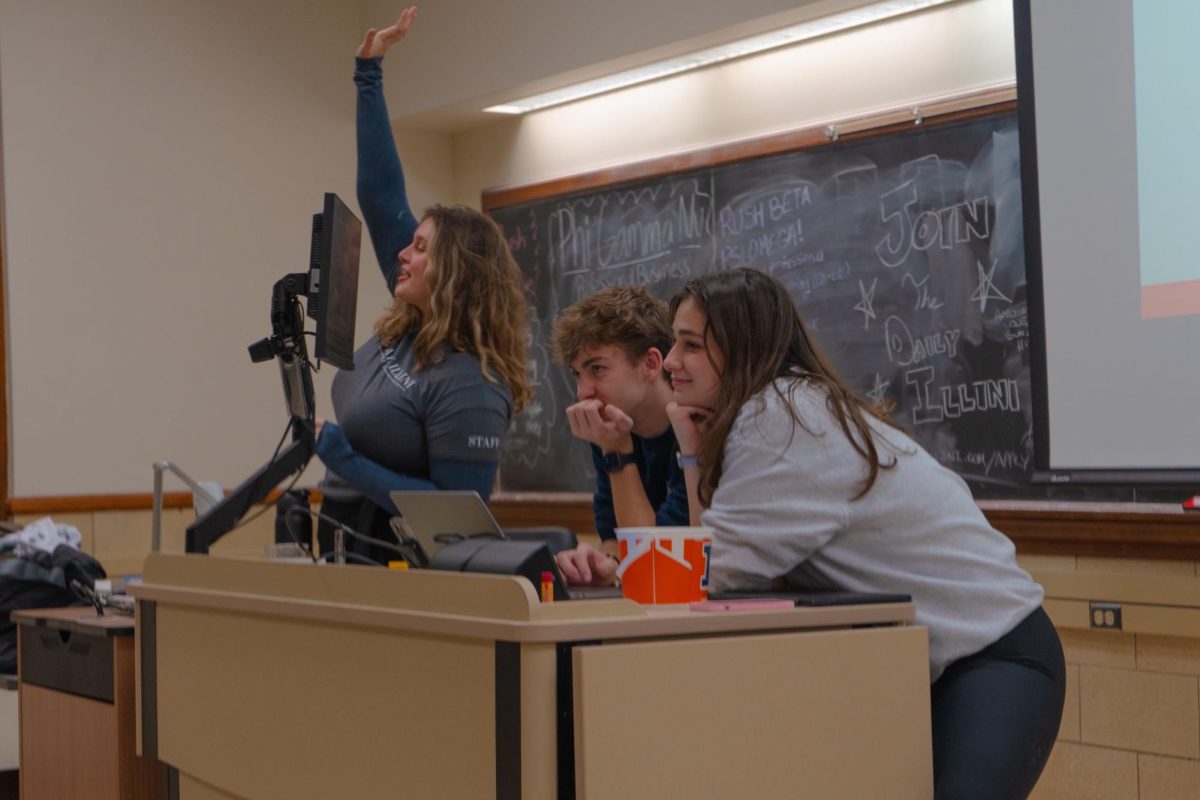All he has to do is walk out, raise his wand, twirl it around some and his spell will be cast. Without touching anything, he causes things to move physically — fingers fly, arms and hands jump and sound reverberates — but he also stirs up something often inexplicable within the spectators.
Now, this is not a kind of magic where we have to board a certain train at Platform Nine and Three-Quarters in King’s Cross Station to find ourselves among nearly headless ghosts and pumpkin juice. Rather, this is a kind of magic created by a conductor and his orchestra that costs a student a $20 student fee each semester and a $10 ticket at Krannert Center for the Performing Arts.
When performances like these are so cheap compared to their regular $100 price tag, the only excuse not to see one is that your heart has stopped beating. Even then, seeing one of these performances might jolt it back to a regular thumping matched by the timpani drum on stage.
“But there are no words. What am I supposed to pay attention to? I swear I’ll fall asleep as fast as I do when my professor opens her mouth to lecture,” says a random fictitious girl who is supposed to represent an overly-generalized college student for argument’s sake.
Why, yes, imaginary girl, there are no words, because words would take away so much from what they are presenting. For example, let’s look at “The Artist,” one of the most critically-acclaimed films of 2011. Aside from the score, the movie remains virtually silent for the roughly one-and-a-half-hour duration. No dialogue, no sound effects. The score leads us through the movie and conveys the emotions that are lacking from the absence of dialogue. Because of the nature of the film, few wanted to see that movie at first, but when they did, most walked out of the theater taken by the film’s awe-inspiring ability.
Get The Daily Illini in your inbox!
Sunday night, “The Artist” was nominated for 10 Academy Awards, and it won five, one for Best Picture and one for Best Original Score. Words are not necessary to move an audience.
But what do you pay attention to while sitting in a concert hall watching a symphony? I’ll admit that I’ve never taken a music theory class. I can’t tell you the difference between a diminished fifth and an augmented seventh. Did you know certain chords have names? I can barely tell if the key is major or minor. What I do know is my emotions. I can feel the tension, the joy, the suspense, the rise, the fall, the story of a piece of music told in a harmony to which the human voice can only aspire to communicate. Instrumental pieces tell a nuanced story that words can’t.
Where words only have meaning to those that speak the language, an F-sharp played by a Russian, Chinese or German pianist is always understood to be an F-sharp. There is no translator required.
Sitting in the concert hall, you pay attention to bravery of the oboe-player who plays the first note so that the rest of the orchestra may tune their instruments, the thousands of hours the violinist has spent mastering her art, the cooperation and teamwork with which every athlete can sympathize or the mathematical ingenuity of the hall that echoes the sound flawlessly.
Maybe you still think the music sounds boring or uninteresting. Where are the driving beats that are at a Kelly Clarkson concert? They are not there because that music is child’s play in comparison. Anyone can learn the 10 piano chords necessary to play most pop songs, but fewer can master them. A handful can learn the notes to the third movement of Beethoven’s Moonlight Sonata, yet even fewer can master them.
Still don’t believe that a symphony can be so spellbinding? Although not a symphonic piece, I dare you to watch Valentina Lisitsa’s hands as she plays Rachmaninov’s Etude Op. 39 No. 6, “Little Red Riding Hood.” You’ll be glued to it, even without the Imperius Curse cast on you.
_Ryan is a sophomore in LAS._









